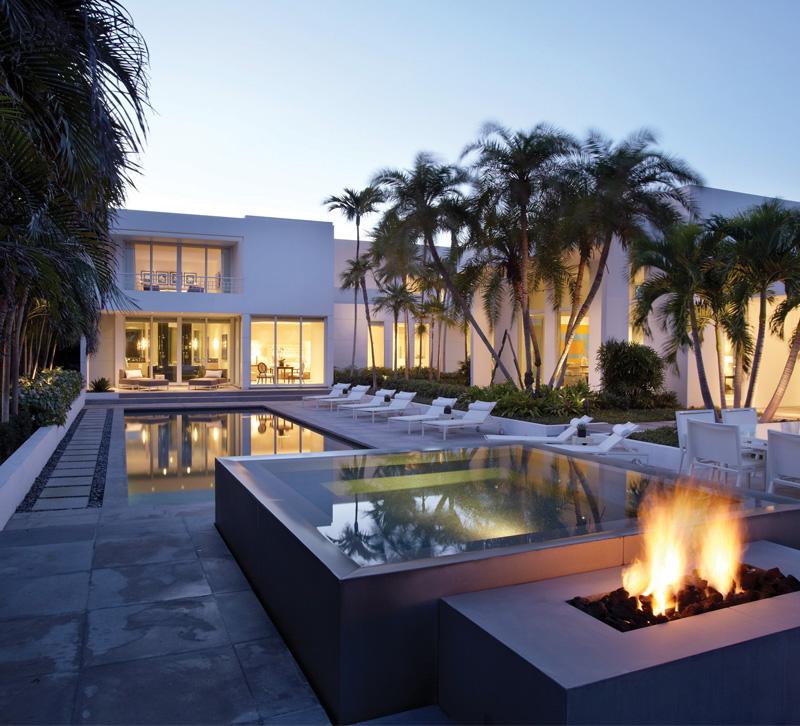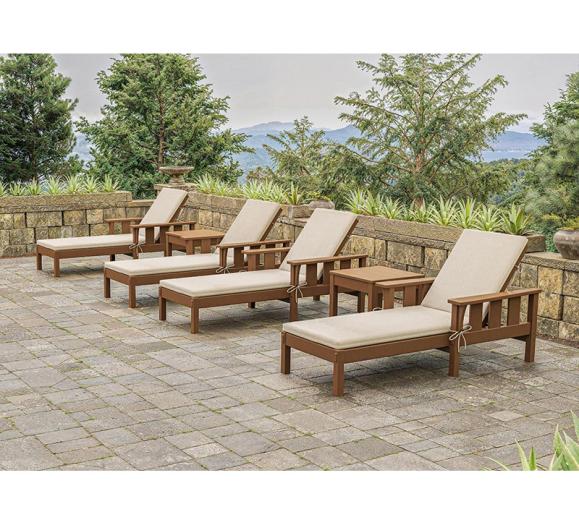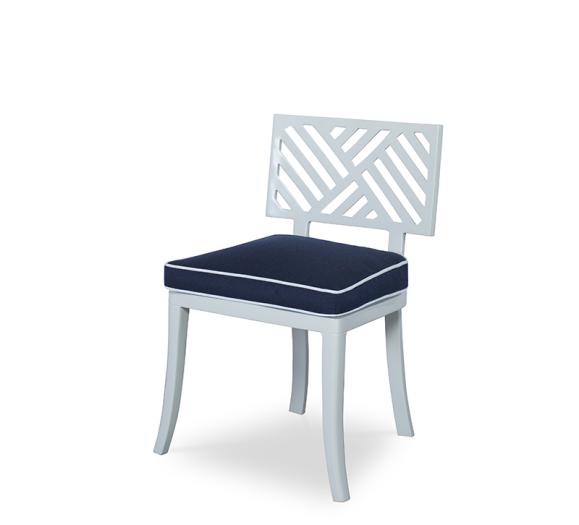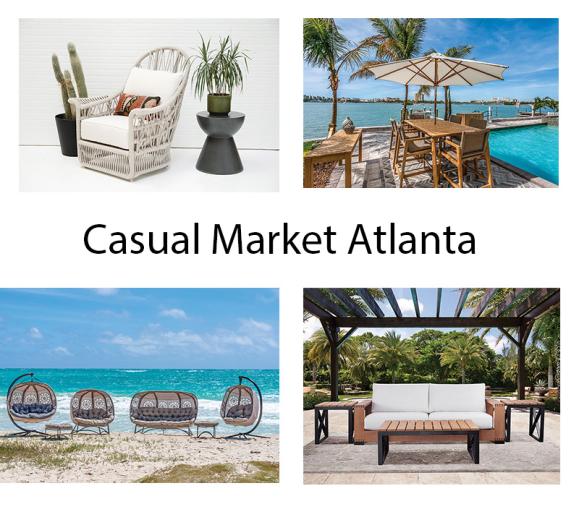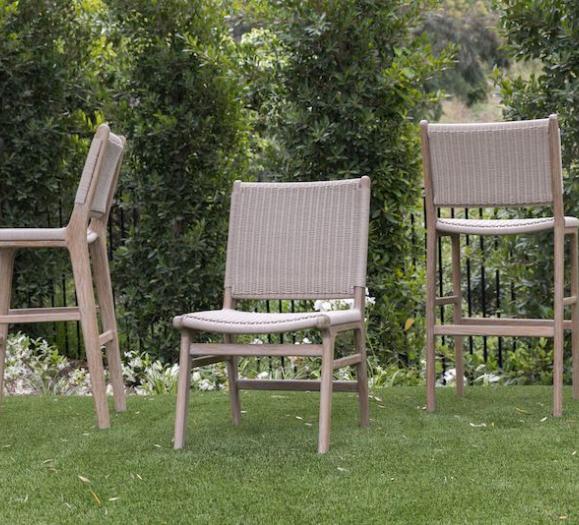Marine biologist Wallace J. Nichols called the remarkable effects of water on health and well-being “blue mind” in his bestselling book about how being near water can make a person happier. Internationally acclaimed Palm Beach-based designer Allison Paladino understands the concept quite well. Her state of blue mind has led to the debut of a new licensed collection of outdoor furniture for Century Furniture, debuting this month at the Casual Market in Chicago.
Known for exquisite interiors that exude a soft, transitional elegance, and for her exclusive lines of licensed luxury home furnishings, Paladino has long enjoyed paddle boarding in South Florida waterways as a way to unwind and recalibrate after long days immersed in a high-profile design business that encompassed both residential and commercial projects around the globe. Then, a few years ago, she met her significant other, an expert sailor and boat captain, and began spending a lot more time on the water. These days the couple brings paddleboards along on their travels aboard a full-size sailboat, and Paladino’s new collection born of spending “a lot of time on the water,” and “white, crisp material against fabulous blue skies,” is aptly named SAIL.
Readying for launch and tightly furled at press time, SAIL encompasses one dozen pieces crafted in powder-coated aluminum with a white finish. (Occasional tables feature tempered glass tops and upholstered seating stands apart with welt-less cushions). The overall feel is luxe and modern, and quite classical.
“I had been having trouble finding a very simple, very clean, outdoor line that was both luxe and accessibly priced that really bridged the gap between modern and transitional,” says the designer who studied under the tutelage of industry icon Thomas Pheasant before launching her eponymous firm in the late ‘90s. “While a lot of our work now is contemporary, I don’t like hard-edged. I like a little softness and warmth. A lot of the product out there is so severe and blocky, without much grace, and it’s also low to the ground. That’s a big issue for me because many of my clients are older. They obviously want great style, but they also want furniture that is easy to get up out of and really comfortable whether it is a dining chair or lounging poolside.”
In essence, Paladino suggests, clients want outdoor furnishings that are becoming less and less distinguishable from their indoor counterparts. This means that the feel of the outdoor fabrics must be as luxurious as those she uses inside, where she covers 80 percent of upholstered furniture in her projects in Perennials luxury performance fabrics. “They also do the most fabulous outdoor rugs that you can literally clean with bleach.” Paladino herself is set to launch a collection of rugs with Perennials in 2020.
Blurred Lines
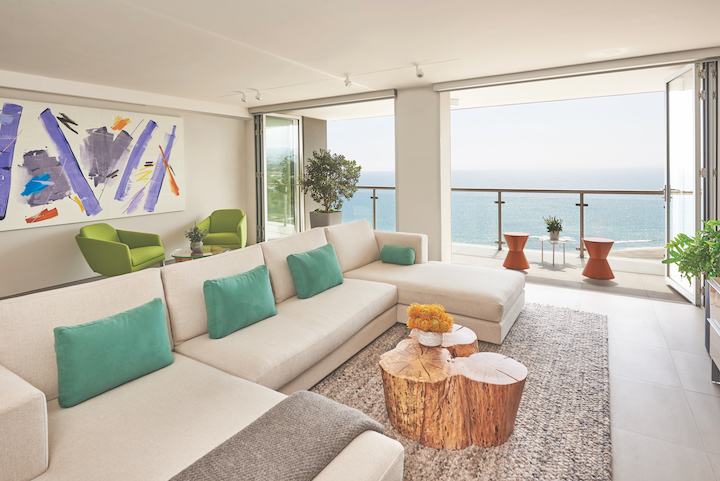
Santa Monica, CA-based interior designer Sarah Barnard is currently in the midst of completing a Manhattan Beach roof deck with fully upholstered modular furniture.
“We custom made almost all of the furniture for the roof of the beach house, partly because it is accessed by three flights of stairs with turns, but also because with the exception of very expensive, non-customizable Italian outdoor brands, there is not a lot of super-luxury, indoor-looking furniture made for the outside. Taking one of those brands that could not be modified as inspiration, we reworked the dimensions and component sizes to fit with our client’s actual needs. This enabled us to create a very cushy, lounge-looking space that will survive the elements, that doesn’t at all look like outdoor furniture.”
Whether it’s true or not, Barnard says outdoor furniture is perceived by her clients as less comfortable than indoor furniture. “Restoration Hardware has broadly marketed their Cloud sofa and so people have this vision in their minds that comfort looks…puffy. It’s the thing you sink into, that looks comfortable, whereas tight-back and tight seat cushions that you typically see on wood- or metal-framed outdoor furniture doesn’t call to you in the same kind of fluffy, down-comforter-kind-of-cushiness that indoor sofas do.”
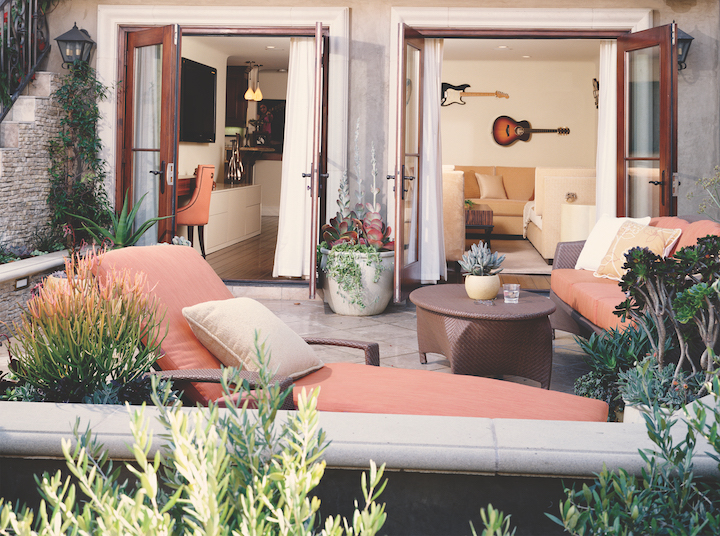
Cost becomes a factor in transitioning that comfortable feel outside, and likely why fully upholstered designs—available in the marketplace overseas—will not be readily in evidence at the Chicago Market this month. “Interior furniture can be made out of much less-expensive materials because it is not exposed to the elements,” Barnard describes. “In exterior furniture, the frame either needs to be marine-grade plywood or stainless steel or something that can survive the elements. Beyond the framing materials, there’s the foam required, and foam that can survive outside, that will drain water quickly if it gets rained on, is very different from the foam used on interior sofas which would sop up everything like a sponge.”
Essentially, thanks to quickly advancing technologies in performance fabrics and fills, “everything is possible now. It’s just more expensive.” Too, Barnard adds, Californians tend to be early adopters when it comes to new trends in outdoor spaces. While the outdoor category was for decades a seasonal, Memorial-through-Labor Day type business on the East Coast (at least until the relatively recent advent of fire elements), “we have the luxury of entertaining outside almost all year-round. I mean, we joke that we don’t know it’s winter until people start complaining about their flip-flops getting wet in the rain. We don’t really transition out of outdoor living seasonally; we just sort of exist there all the time.”
The good news for interior designers with outdoor projects and the industry as a whole, is that “homeowners are finally hip to the idea that quality really does matter, that spending more up front for a product that lasts really is a worthwhile investment, not only for long-time enjoyment with less maintenance, but also for environmental responsibility.”
In her own practice, she describes her clients as “the one percent with a conscience. They are the folks who can afford anything they want but they want to choose the right thing for their family and for the planet and their community. So, we see ourselves as the team to facilitate doing the right thing and living your best life.”
Making it work requires creativity and an awareness of biophilia—the concept that humans possess an innate tendency to seek connections with nature and other forms of life. In Southern California, “it’s beachfronts and beach-adjacent areas that are highly desirable. Many of our clients acquire these properties, and the perk is the beautiful view of the sea but the downside is that there is very little actual outside space. There’s the beautiful boardwalk and the coastline, but outside space that belongs to you is pretty minimal. That’s where pottery as jewelry, and succulent gardens and even herb gardens that are potted can provide a garden-esque feeling to what probably is more likely called a patio or porch.”
“I think most cultures have known for a long time that being connected to nature makes us feel better and more mentally alert, happier and more connected to friends and family. We just published a related story on our blog—Sarah Barnard Design—encouraging people to get outside, because I think a lot of folks, even those with ocean views, need a reminder to not just look out the window, but to physically go outside and feel the sun on your face.”
Naturally Traditional
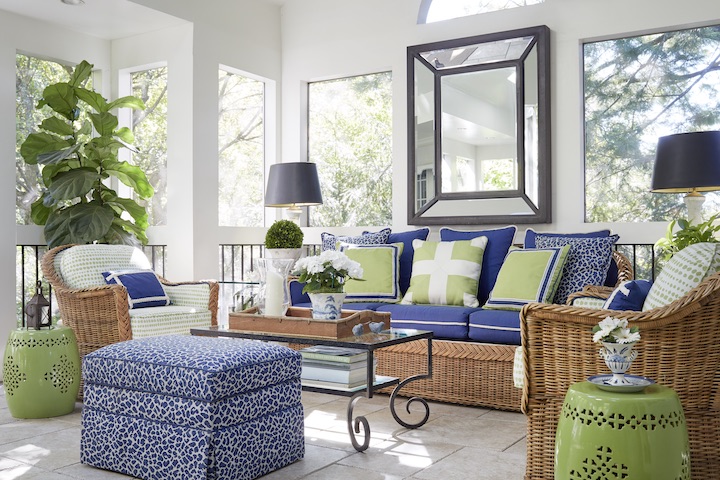
On the East Coast, Kelley Proxmire, based in Bethesda, MD, says “paying attention to scale, and doing a floorplan, even for furnishings outside, is very important in creating outdoor spaces. Right now, for example, we’re working on a house where a pergola is being added, and we’ve got to figure out the size of that in relationship to the furniture that’s going to be underneath it.”
The other key to an interesting outdoor space, she contends, is variety. “I don’t like everything to be the same, and I don’t like to see ‘sets.’ ” On the screen porch overlooking her own backyard, the eclectic mix of high and low ranges from McKinnon & Harris, “which is fabulous and very expensive,” to Pierce Martin and pieces purchased via Frontgate. All of the fabrics are indoor/outdoor, as is the fill.
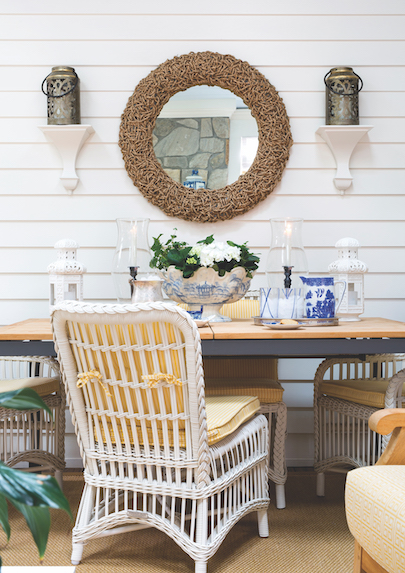
In terms of trends, wicker and rattan, which are currently making a resurgence across all home furnishings categories, never really passed out of style for this specialist in “tailored traditional interiors. It’s a classic look,” she says. But like her counterparts across the country and to the South, she says performance fabrics have made the greatest impact on what’s possible both indoors and out. “It’s been a huge change. I just had a meeting with a client yesterday where we wanted to put a cushion in her bay window in white. She said, “Oh! You can’t possibly!” I said, “I understand your concern, but here is the fabric and I want you to spill red wine on it tonight, catsup, whatever you can think of. Sure enough she did, and it all came out. Now she’s a believer. And we can do the white cushions.”



